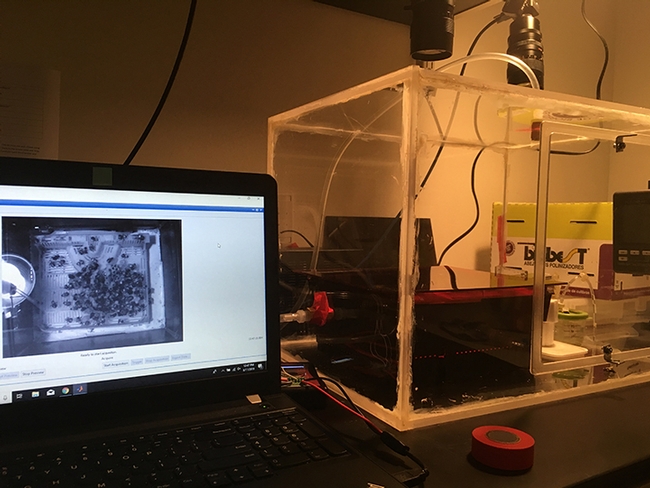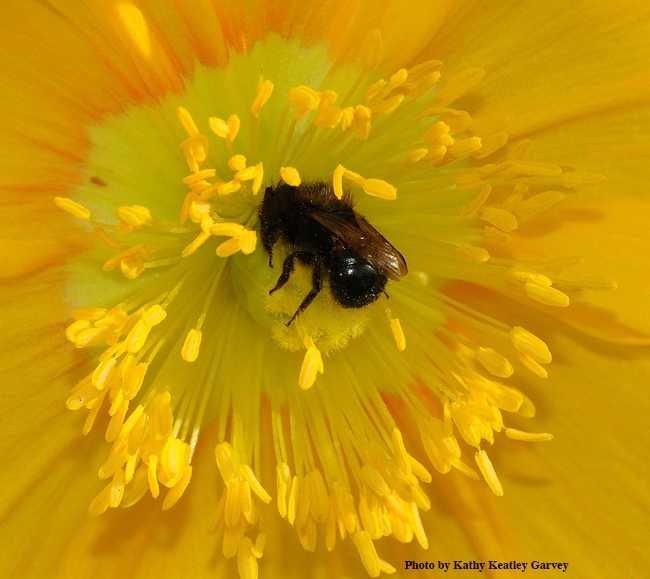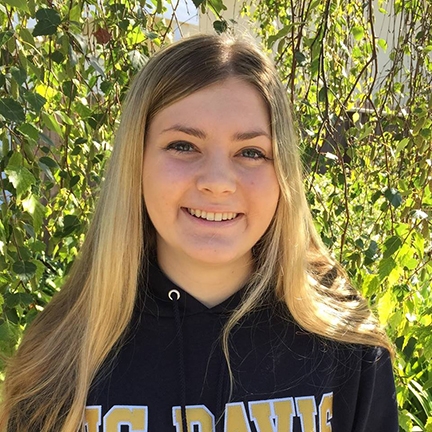
Each will receive a bachelor's degree in entomology in June and each has been singled out for high honors.
Wargin is the newly selected recipient of the UC Davis Department of Entomology and Nematology's “Citation for Outstanding Performance,” as well as a “Department Citation” for her stellar achievements in academics and research. Keating is the recipient of a "Department Citation."
The department usually hosts a ceremony to honor the award recipients, but due to coronoavirus pandemic precautions, the presentations are pending.
Meet Annaliese Wargin
Annaliese Wargin holds a near straight-A grade point average and is a member of the highly competitive Research Scholars Program in Insect Biology (RSPIB), founded and co-directed by faculty members Jay Rosenheim, Joanna Chiu and Louie Yang of the UC Davis Department of Entomology and Nematology. As part of RSPIB, Wargin joined the lab of Stacey Combes, associate professor, Department of Neurology, Physiology, and Behavior, to research the biomechanics and behavioral ecology of flying insects.
Combes described her as “one of the most promising undergraduates I have ever worked with in terms of her potential for research and a career in academia.”
Academic advisor Sharon Lawler, professor of entomology, praised Wargin's academic record, zeal and communication skills. “She is an extraordinarily talented and hard-working scholar. Her achievements and clear research focus promise early and extended success.”
For the past year, Wargin has been working on an experiment investigating the effects of changing barometric pressure on bumble bee (Bombus impatiens) foraging behavior. She presented the preliminary results at the 2020 annual meeting of the Society of Integrative and Comparative Biology in January.
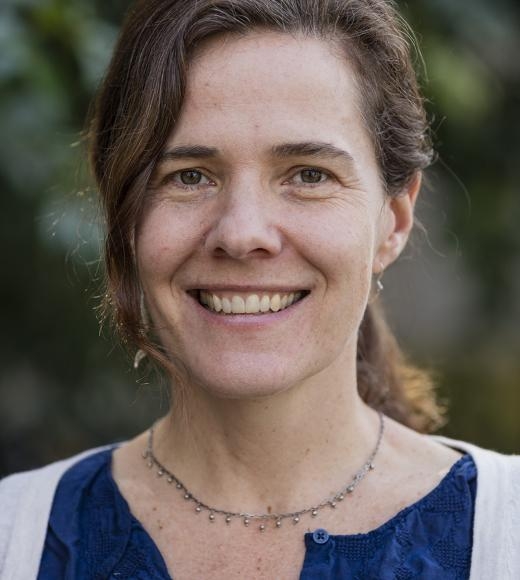
As part of her research, Wargin built a device to “experimentally control pressure using a plexiglass box, which could hold an entire hive of bees and a nectar source, a solenoid valve system connected to an air source and vacuum, and a variety of cameras to record behavior.”
“I subjected the hive inside the box to two pressure regimes in my preliminary trial: increasing pressure and decreasing pressure,” Wargin said. “With the cameras, I captured images of individually tagged worker bees leaving and returning to the hive during foraging, as well as videos of the inside of the nest to observe overall activity.”
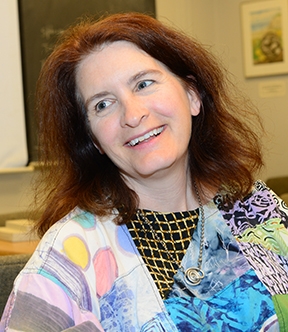
Combes praised her creativity and her ability to “plan and organize a novel project from the ground up.”
“Last spring, Annaliese and I began discussing ideas for an independent research project for her to conduct during her senior year,” Combes said. “She became excited about the idea of experimentally testing the effects of barometric pressure changes (which often precede storms and other changes in weather) on bumble bee foraging and nest care behavior. Anecdotal accounts of the effects of pressure changes on bees and other animals abound, but experiments have rarely been performed on this topic in a controlled setting – partly because it's not entirely straightforward how to design a system that allows one to control and alter barometric pressure. “
“However, Annaliese dove right into this challenge and set about designing a custom-built, air-tight enclosure to house a colony of bees and their foraging chamber,” Combes said. “She spent several months constructing this system--researching and ordering proportional solenoid valves to precisely control inflow and outflow from the chamber (to alter pressure) and designing camera systems to automatically capture videos of in-hive behavior as well as motion-activated photographs of individual foragers that she marked with QR-code tags. Annaliese succeeded in producing a system to test her questions and conducted a preliminary experiment over several weeks on one hive this summer. The results are very promising, and we plan to follow up with several more experiments on additional hives this year.
Said Combes: “Annaliese's creativity in research questions and approaches, her determination in designing and trouble-shooting a very difficult technical set-up, and her diligence in collecting rigorous data for hours on end have resulted in what I think will be some novel and very important findings about how a ubiquitous environmental variable affects the behavior of key pollinators. I anticipate this research resulting in a high-impact publication over the next year, with Annaliese as the lead author.”
In addition, she has “devoted herself to outreach and to sharing her extraordinary passion for insects with the general public, and especially with girls and women,” Combes said. “She has always loved insects and was initially mystified when many of her classmates (especially girls) seemed scared of these creatures.”
A native of Rancho Palos Verdes, a suburb in Los Angeles County, Annaliese developed her interest in insects in early childhood. “I spent the early years of my life in Chicago, where I had a few encounters with insects like cicadas, mantises and bees,” she related. “These experiences sparked my interest and inspired me to pursue a career that was closely connected to the natural world. I went through a few different phases when I was a teenager when it came to what I wanted to do in college, but all of them were related to the biological sciences, and I eventually decided to do what I always did--spend a lot of time looking at and learning about insects. That initial fascination with insects has since developed into a broad interest in the fields of insect behavior and insect ecology.”
As a teen-ager, Annaliese won the prestigious Girl Scout Gold Award, the highest Girl Scout honor, for her 80-hour self-led service project focused on insect outreach. She delivered several presentations to children in her community about insects and their importance to the natural world. The award honors the “dreamers and the doers who take ‘make the world a better place' to the next level, according to the Girl Scout Association.
Her future plans? “I plan to attend graduate school and earn a PhD in insect ecology,” Wargin said. “I feel drawn to research and am excited about what I'll study in the future.“
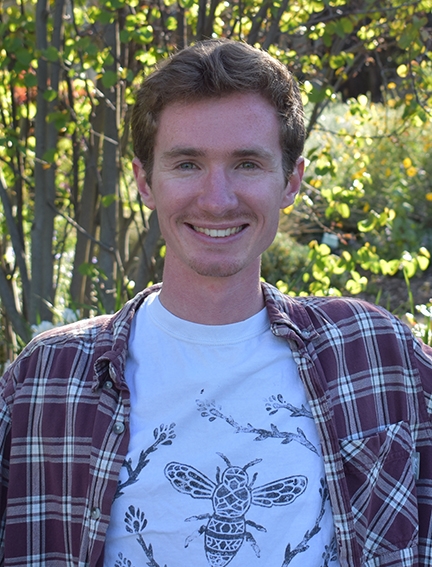
Garrett Keating, who performs microbiome/pollinator experiments in the laboratory of community ecologist Rachel Vannette, is the recipient of a “Department Citation” from the UC Davis Department of Entomology and Nematology for his outstanding work.
"Garrett is working on interactions between the solitary bee Osmia lignaria and microbes that are found in the larval provisions,” said Vannette, an assistant professor. “Larvae of this bee feed on the stored nectar and pollen provision, during which time the fungi and bacteria from collected nectar and pollen grow on these stored resources.”
“Garrett is examining how bacterial and fungal composition changes over time as the provisions age--and larvae grow--so this is a study in microbial community succession in bee food,” she added. “We are interested to see if microbes in stored nectar and pollen (provisions) affect the provision itself and if they end up in the gut of larval bees. He has already performed the sampling and is finishing up bioinformatics and analysis right now.”
His project is a collaboration between the Vannette lab and Neal Williams lab.
Keating, who joined the Vannette lab in 2019, plans to spend the summer working in the lab, and then next year “working at a nature-based outdoor education program in Sonoma,” he said. “After that I hope to return to entomology research.”
“I've been interested in entomology ever since I was a kid,” Keating said. “I grew up playing with spiders in my backyard and watching ants fight termites. My dad helped me set up science fair projects with pill bugs and water striders.”
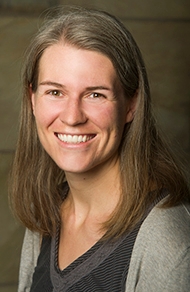
Keating, from the East Bay city of Piedmont, enrolled at UC Davis after transferring from UC Riverside from 2016-2018. "In 2017-2018 I worked in Jessica Purcell's lab, studying socially polymorphic ants," he said, "and in the summer of 2018 I conducted a independent research project in Switzerland, studying bumble bee diversity along an elevational gradient. This was done through the UC study abroad program."
He graduated from Naropa University, a private university in Boulder, Colo., where he was involved in the Naropa LeapYear Gap Experience Program. During his freshman year, he earned semester credit while studying, working and doing internships in the United States and abroad.
Keenly interested in the environment, Keating served as a volunteer in a UC Berkeley professor's project in 2015 to stop the growth of Sudden Oak Death. Also in 2015, he engaged in a 100-hour project at The Presidio, San Francisco, to preserve wildlife and remove invasive species.
Keating completed an internship in 2016 with the Volunteer Initiative Nepal, where he worked on a water research project in Kathmandu, Nepal. His other work experiences range from cabin leader to camp counselor to head counselor for youth outdoor education programs from 2012 to 2018.
n avid volunteer, Keating engaged in a variety of projects with Amor Ministries from 2012 to 2015; in 2012 and 2013, he built houses for needy families in San Juan, Mexico. In the summer of 2014, he volunteered with Amigos de las Américas in Oaxaca, Mexico, and also conducted a summer program there to teach children the importance of amaranth as a grain or pseudocereal.
Attached Images:
